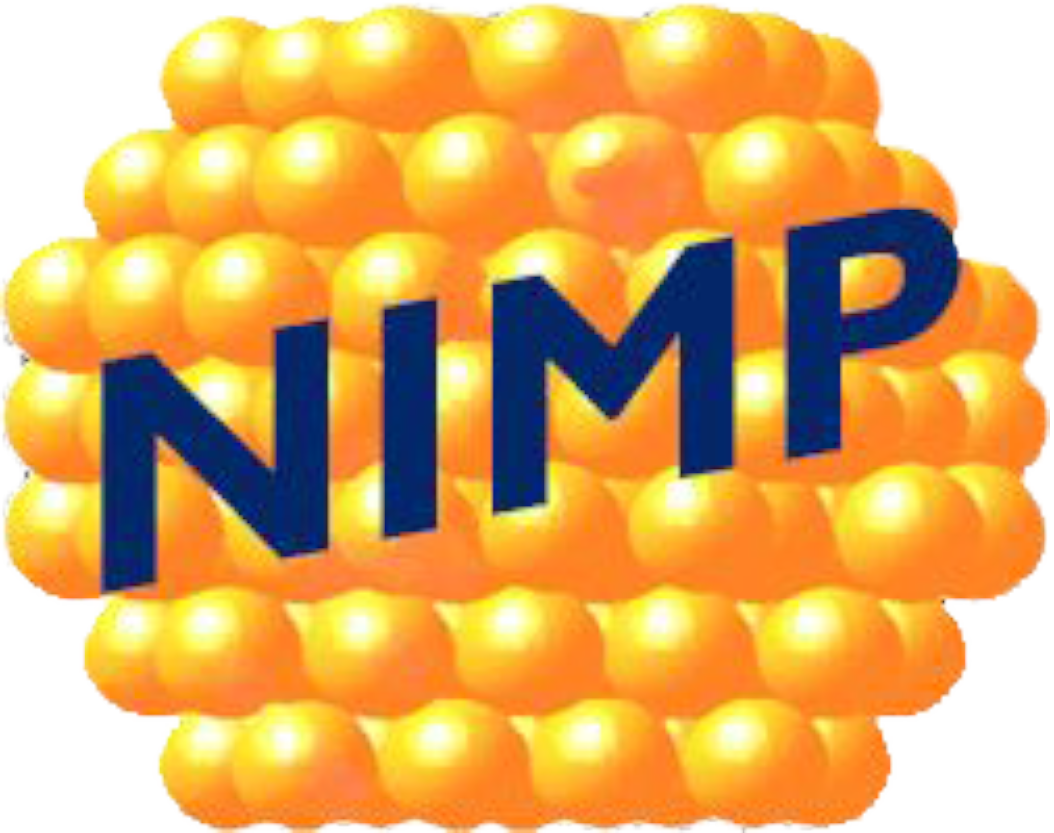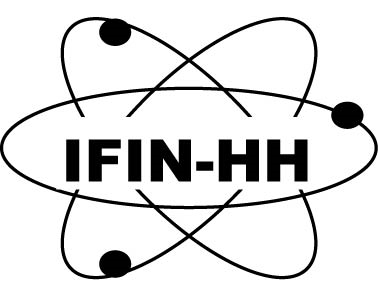Towards perovskite large area photovoltaics
Publicatii
2021
1) Enhancing stability of hybrid perovskite solar cells by imidazolium incorporation
Authors: Tomulescu, Andrei Gabriel; Leonat, Lucia Nicoleta; Neatu, Florentina; Stancu, Viorica; Toma, Vasilica; Derbali, Sarah; Neatu, Stefan; Rostas, Arpad Mihai; Besleaga, Cristina; Patru, Roxana; Pintilie, Ioana
Preprint available at: https://perla-pv.ro/repository/
Published:Aug 2021 in Solar Energy Materials and Solar Cells
DOI: 10.1016/J.SOLMAT.2021.111096
Abstract
Hybrid perovskites based solar cells have demonstrated high conversion efficiency but poor long-term stability. This study reports on the results obtained after doping the CH3NH3PbI2.6Cl0.4 mixed halide perovskite with imidazolium (C3N2H5+, denoted IM) on the “A site” position of a perovskite, to improve photovoltaic performances and stability of hybrid perovskite solar cells. The perovskite films were investigated exhaustively by different characterization techniques: X-ray diffraction, Atomic Force Microscopy, Scanning Electron Microscopy, UV–Vis, X-ray Photoelectron Electron Paramagnetic Resonance spectroscopies, Impedance Spectroscopy and Incident Photon-to-Electron Conversion Efficiency. The photovoltaic parameters were determined by measuring the IV curves of the corresponding solar cells. The amount of IM inserted in the perovskite play a key role on the film properties. The calculated new tolerance factors according to the „globularity factor” are experimentally proved and thus at doping concentrations greater than 20% for CH3NH3PbI2.6Cl0.4 perovskite the 3D structure is no longer obtained. However, below this value, the IM substituted perovskite film possesses an improved film quality and crystallinity as compared to the pristine film. Substituting MA+ with IM+ provides a favorable way to reduce recombination processes and shows great potential to achieve high stability, and an improved charge generation, resulting in increased PCE values. We find that the optimal percentage of imidazolium incorporation to achieve better stability of solar cells is 6%.
Graphical abstract

2) Tetragonal-Cubic Phase Transition and Low-Field Dielectric Properties of CH3NH3PbI3 Crystals
Authors: Roxana E. Patru; Hamidreza Khassaf; Iuliana Pasuk; Mihaela Botea; Lucian Trupina; Constantin-Paul Ganea; Lucian Pintilie; Ioana Pintilie
Published:Aug 2021 in Materials
DOI: 10.3390/MA14154215
Abstract
The frequency and temperature dependence of dielectric properties of CH3NH3PbI3 (MAPI) crystals have been studied and analyzed in connection with temperature-dependent structural studies. The obtained results bring arguments for the existence of ferroelectricity and aim to complete the current knowledge on the thermally activated conduction mechanisms, in dark equilibrium and in the presence of a small external a.c. electric field. The study correlates the frequency-dispersive dielectric spectra with the conduction mechanisms and their relaxation processes, as well as with the different transport regimes indicated by the Nyquist plots. The different energy barriers revealed by the impedance spectroscopy highlight the dominant transport mechanisms in different frequency and temperature ranges, being associated with the bulk of the grains, their boundaries, and/or the electrodes’ interfaces.
Graphical abstract
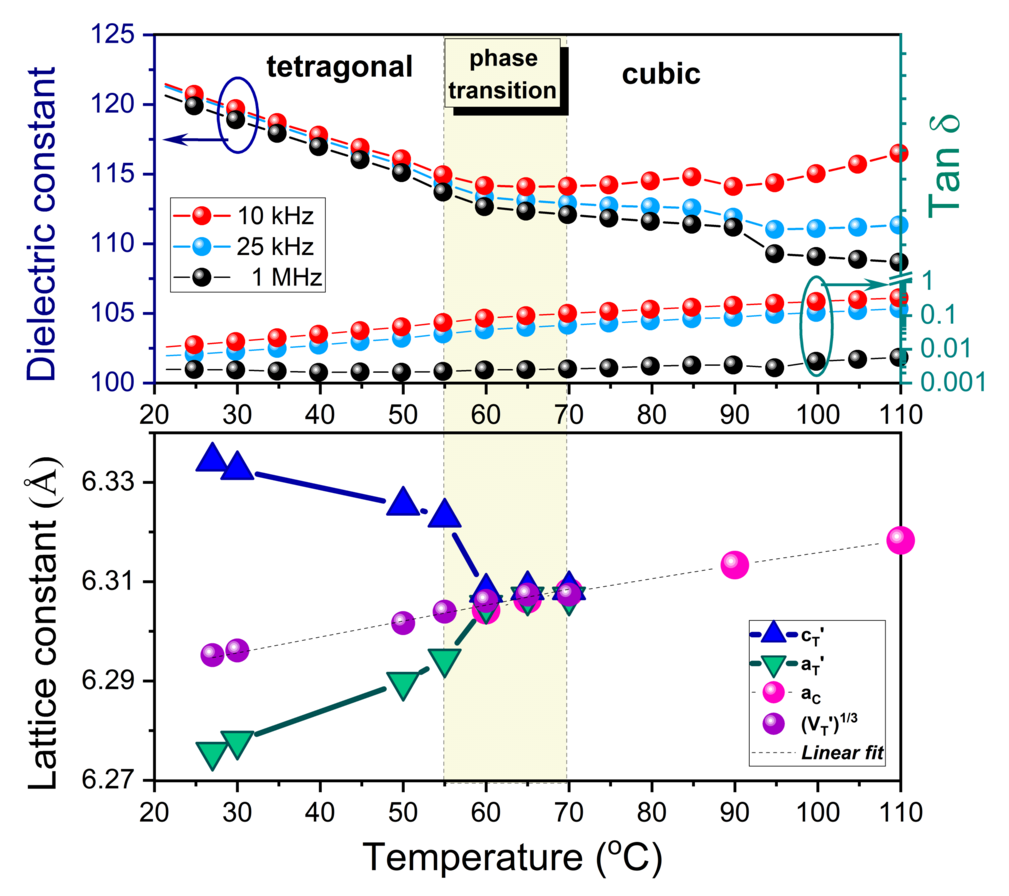
3) Effect of chlorine and bromine on the perovskite crystal growth in mesoscopic heterojunction photovoltaic device
Authors: Hanadi Mehdi, Lucia Nicoleta Leonat, Viorica Stancu, Hamza Saidi, Monica Enculescu, Andrei-Gabriel Tomulescu, Vasilica Toma, Ioana Pintilie, Abdelaziz Bouazizi, Aurelian Catalin Galca,
Preprint available at: https://perla-pv.ro/repository/
Published: on-line in february 2022 in Materials Science in Semiconductor Processing
DOI: 10.1016/j.mssp.2022.106558
Abstract:
Organic-inorganic hybrid perovskite solar cells are within the emerging photovoltaic technologies. The combination of different halogen ions, in certain fill fractions, is one of the methods to improve the perovskite film properties. Herein, fabrication and characterization of perovskite cells in standard mesoscopic architecture using one-step deposition method has been done. The role of the halogen ions (Chlorine or Bromine) on crystal structure growth and photoelectric performance has been investigated. X-ray diffraction, scanning electron microscopy, atomic force microscopy and optical microscopy analysis were performed. The microstructure, composition and morphology of CH3NH3PbI1.8Br1.2 and CH3NH3PbI1.8Cl1.2 films are dissimilar, although identical fabrication method was used. Same holds for optical properties, band gap energies of 1.84 eV and 1.63 eV, respectively, being obtained. Integrated in solar cells, the maximum power conversion efficiency of the Br based devices is beyond 10%, while for those based on Cl, the efficiency drops around 5%.
4) Capacitive and Inductive Effects in Perovskite Solar Cells: The Different Roles of Ionic Current and Ionic Charge Accumulation
Authors: Nicolae Filipoiu, Amanda Teodora Preda, Dragos-Victor Anghel , Roxana Patru, Rachel Elizabeth Brophy , Movaffaq Kateb , Cristina Besleaga, Andrei Gabriel Tomulescu, Ioana Pintilie , Andrei Manolescu, and George Alexandru Nemnes
Published: on 28 December 2022 in Phys. Rev. Applied
DOI: 10.1103/PhysRevApplied.18.064087
Abstract: Dynamic hysteresis effects have been long known to occur in the current density-voltage characteristics of perovskite solar cells, with the ionic migration being identified as the primary factor. The hysteretic effects impacted early studies by the uncertainty in the evaluation of the power conversion efficiency, while currently, potential links to degradation mechanisms are the focus. Therefore, understanding ion migration is a central goal, typically addressed by performing a combined large and small signal analysis. The reported large capacitive and inductive effects created controversies with respect to the underlying mechanisms, yielding essentially two classes of models, one based on the large accumulation capacitances and the other based on the ionic modulation of the collected current. We introduce here an equivalent circuit model and interpret these phenomena in terms of recombination current modulation, identifying the distinct contributions from ion current and ionic charge accumulations. These contributions to the recombination current are associated with capacitive and inductive effects, respectively, and we corroborate the numerical simulations with electrochemical impedance spectroscopy measurements. These show the role of the recombination currents of photogenerated carriers in producing both capacitive and inductive effects as the illumination is varied. Moreover, we provide a bridging point between the two classes of models and suggest a framework of investigation of defect states based on the observed inductive behavior, which would further aid the mitigation of the degradation effects.

5) Fundamentals and classification of halide perovskites
Authors: Sarah Derbali, Viorica Stancu,Andrei G. Tomulescu, Cristina Besleaga, George Alexandru Nemnes, Ioana Pintilie and Mihaela Florea
Published: on 29 November 2022, Chapter 2 (pages 19-55) in PEROVSKITES Structure, Synthesis and Applications, Elsevier, Editors: Yiqiang Zhan, Mohammad Khalid, Paola Vivo and Numan Arshid
eBook ISBN: 9780323885232
Paperback ISBN: 9780323885225
DOI: 10.1016/B978-0-323-88522-5.00005-3


6) Ab initio studies on perovskites
Authors: Tudor Luca Mitran, Rachel Elizabeth Brophy, Marina Cuzminschi, Nicolae Filipoiu, Movaffaq Kateb, Ioana Pintilie, Andrei Manolescu and George Alexandru Nemnes
Published: on 29 November 2022, Chapter 5 (pages 153-185) in PEROVSKITES Structure, Synthesis and Applications, Elsevier, Editors: Yiqiang Zhan, Mohammad Khalid, Paola Vivo and Numan Arshid
eBook ISBN: 9780323885232
Paperback ISBN: 9780323885225
DOI: 10.1016/B978-0-323-88522-5.00012-0


7) Partial Replacement of Dimethylformamide with Less Toxic Solvents in the Fabrication Process of Mixed-Halide Perovskite Films
Authors: Viorica Stancu, Andrei Gabriel Tomulescu, Lucia Nicoleta Leonat, Liliana Marinela Balescu , Aurelian Catalin Galca , Vasilica Toma, Cristina Besleaga, Sarah Derbali and Ioana Pintilie
Abstract
The technology of perovskite solar cells (PSC) is getting close to breaching the consumer market. Yet, one of the current challenges is to reduce the toxicity during their fabrication by reducing the use of the toxic solvents involved in the perovskite fabrication process. A good solubilization of lead halides used in hybrid perovskite preparation is required, and it is only possible with polar solvents. A mixture of dimethylformamide (DMF) and dimethyl sulfoxide (DMSO) is the most popular solvent combination for a perovskite precursor solution. DMF is necessary to ensure a good dissolution of lead iodide, but it is also the most toxic solvent. In this paper, we study the replacement of the dimethylformamide with presumably less toxic alternatives, such as N-methyl-2-Pyrrolidone (NMP) and ethyl acetate (EA), for the preparation of the K0.1 FA0.7MA0.2PbI2.8 Cl0.2 (KFAMA) hybrid perovskite. The perovskite thin films were investigated by various characterization techniques: X-ray diffraction, atomic force microscopy, scanning electron microscopy, and UV–vis spectroscopy, while the photovoltaic parameters were determined by measuring the IV curves of the corresponding
solar cells. The present study shows that by keeping the same deposition parameters as when only DMF solvent is used, the partial solvent substitution with NMP and EA gives promising results for reducing the toxicity of the fabrication process of KFAMA-based PSCs. Thus, with no specific optimization of the deposition process, and for the maximum possible partial substitution of DMF with NMP and EA solvents, the loss in the power conversion efficiency (PCE) value is only 35% and 18%, respectively, associated with the more structural defects promoted by NMP and EA.
Published: 7 February 2023 in Coatings 2023, 13(2), 378;
DOI: https://doi.org/10.3390/coatings13020378 (Open access)

8) Sub-Stochiometric Nickel Oxide Hole-Selective Contacts inSolar Cells: Comparison of Simulations and Experimentswith Sputtered Films
Authors: Mrutyunjay Nayak, Kristin Bergum, George E. Stan, In-Hwan Lee,and Andrej Kuznets
Abstract: Sub-stochiometric nickel oxide (NiOx) films were investigated as a hole selective contact option in silicon (Si) heterojunction solar cells. Numerical simulations were carried out to evaluate the impacts of the NiOx electronic properties variations and the NiOx/Si interface defect density (Dit) on device performance. Simulation data suggest that the best performance is achievable for wide bandgaps (Eg) and corresponding high valence band edge (EVB) positions in the NiOx films. Overall, in simulations, the performance remains practically unchanged for the nickel vacancy concentrations [VNi]=1017–1021cm3,assuming high EVB and low Dit. The experimental data measured using NiOx films prepared by radio-frequency magnetron sputtering reveal that the increase in [VNi] lifts the conductivity, concurrently decreasing Eg and EVB. As a result, we concluded that the performance of the fabricated sputtered NiOx/Si heterojunction solar cell is limited by high Dit as well as narrow Eg and low EVB.
Published: in Phys. Status Solidi A 2023,220, 2200651;
DOI: https://doi.org/10.1002/pssa.202200651
9) Effect of Pressure on the Dynamics of Iodide Defects in Methylammonium Lead Iodide: An Atomistic Simulation
Authors: Rachel Elizabeth Brophy,* Movaffaq Kateb, Kristinn Torfason, George Alexandru Nemnes, Halldor Gudfinnur Svavarsson, Ioana Pintilie, and Andrei Manolescu
Abstract: The diffusion of iodide defects has been considered the most important degradation mechanism of methylammonium lead iodide (MAPI) in solar cells. The present study demonstrates the importance of the pressure inside this material on the dynamics of iodide defects, using molecular dynamics simulations. It is known that the diffusion coefficient of an iodide vacancy is an order of magnitude higher than that of interstitial iodide. We show that this difference systematically increases with increased tensile strain and that both diffusion coefficients tend to zero when a compressive strain is applied. This result suggests that compression of the MAPI can be a good solution to reduce its degradation rate. Besides, the statistical aspect of deriving the diffusion coefficient from the mean squared displacement (MSD) is discussed in terms of the initial conditions (positions and velocities) of the atoms and the simulation time, considering different seeds of the pseudorandom number generator used in the simulations performed with the LAMMPS software.
Published: in J. Phys. Chem. C 2023, 127, 17, 7938–7943
DOI: https://doi.org/10.1021/acs.jpcc.3c00657 – free access from repository: https://arxiv.org/abs/2302.05696
Graphical Abstract

10) Partial replacement of Pb2+ in MAPbI2.6Cl0.4 perovskite films and their photovoltaic performance
Authors: Derbali, S., Nouneh, K., Leonat, L.N. Stancu, V. Tomulescu, A. G.; Galca, A. C. Touhami, M. Ebn; Pintilie, I.; Florea, M.
Preprint available at: https://perla-pv.ro/repository/
Abstract
Replacing lead atoms in halide perovskite materials is of significant importance for the development of environmentally friendly perovskite solar cells. In this paper, we investigated the effect of doping the MAPbI2.6Cl0.4 hybrid perovskite (MA—methyl ammonium) with non-toxic elements, such as alkaline earth metal ions (Mg2+) and transition metal ions (Zn2+). The structural, morphological, and optical properties of the prepared samples were analyzed using X-ray diffraction (XRD), scanning electron microscopy (SEM), atomic force microscopy (AFM), and UV–Vis. spectroscopy. Finally, the doped films were used as photoactive layers in solar devices in order to evaluate their photovoltaic performance. Zn proved to be more appropriate to replace partially Pb and films with higher quality were obtained. As a result, the MAPb1−xZnxI2.6Cl0.4 based solar cells have demonstrated a slight improvement of the photovoltaic performances, resulting in a uniform and narrower PCEs (power conversion efficiency) range, compared to pristine MAPbI2.6Cl0.4 based devices.
Published:6 April 2023 in J Mater Sci: Mater Electron 2023, 34, 903.
DOI: https://doi.org/10.1007/s10854-023-10318-9 – preprint available at http://perla-pv.ro/repository/
Authors: Derbali, S., Nouneh, K., Leonat, L.N. Stancu, V. Tomulescu, A. G.; Galca, A. C. Touhami, M. Ebn; Pintilie, I.; Florea, M.
Abstract
Replacing lead atoms in halide perovskite materials is of significant importance for the development of environmentally friendly perovskite solar cells. In this paper, we investigated the effect of doping the MAPbI2.6Cl0.4 hybrid perovskite (MA—methyl ammonium) with non-toxic elements, such as alkaline earth metal ions (Mg2+) and transition metal ions (Zn2+). The structural, morphological, and optical properties of the prepared samples were analyzed using X-ray diffraction (XRD), scanning electron microscopy (SEM), atomic force microscopy (AFM), and UV–Vis. spectroscopy. Finally, the doped films were used as photoactive layers in solar devices in order to evaluate their photovoltaic performance. Zn proved to be more appropriate to replace partially Pb and films with higher quality were obtained. As a result, the MAPb1−xZnxI2.6Cl0.4 based solar cells have demonstrated a slight improvement of the photovoltaic performances, resulting in a uniform and narrower PCEs (power conversion efficiency) range, compared to pristine MAPbI2.6Cl0.4 based devices.
Published:6 April 2023 in J Mater Sci: Mater Electron 2023, 34, 903.
DOI: https://doi.org/10.1007/s10854-023-10318-9 – preprint available at http://perla-pv.ro/repository/
11) OH− ions can reduce the iodide migration in MAPI
Authors: R. E. Brophy, M. Kateb, I. Ghitiu, N. Filipoiu, K. Torfason, H. G. Svavarsson, G. A. Nemnes, I. Pintilie, A. Manolescu
Abstract:
One of the main degradation mechanisms of methy-lammonium lead iodine (MAPI), which is an important material for perovskite based solar cells, is the migration of iodide ions. It is believed that this phenomenon is in fact dominated by the diffusion of iodide vacancies. In this paper, we suggest that the addition of a small amount of OH− ions can help suppress the migration of iodide and increase the overall stability of the material. Through the use of molecular dynamics simulations, we show that the OH− ions can bind to the positively charged iodide vacancies and can block the access of the negative iodide ions into those vacancies.
Published in: 2023 International Semiconductor Conference (CAS)
https://ieeexplore.ieee.org/document/10303698
DOI: 10.1109/CAS59036.2023.10303698 – free access from repository: http://arxiv.org/abs/2403.04188
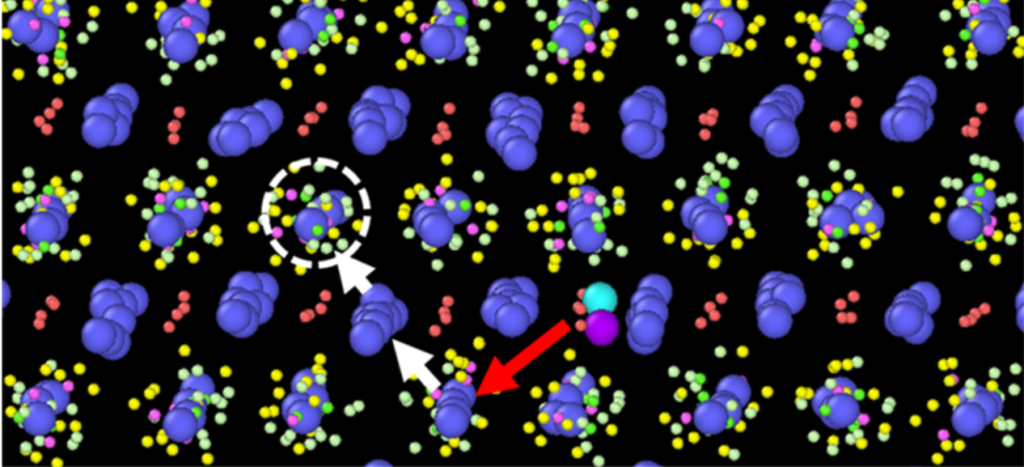
12) Impact of interface defects on the band alignment and performance of TiO2/MAPI/Cu2O perovskite solar cells
Authors: Nicolae Filipoiu, Marina Cuzminschi, Calin-Andrei Pantis-Simut, Kristinn Torfason, Rachel Elizabeth Brophy, Andrei Manolescu, Roxana Patru, Cristina Besleaga, George E. Stan, Ioana Pintilie, George Alexandru Nemnes
Preprint available at http://perla-pv.ro/repository/ and http://arxiv.org/abs/2406.19594
Abstract: Optimizing the interfaces in perovskite solar cells (PSCs) is essential for enhancing their performance, improving their stability, and making them commercially viable for large-scale deployment in solar energy harvesting applications. Point defects, like vacancies, have a dual role, as they can inherently provide a proper doping, but they can also reduce the collected current by trap-assisted recombination. Moreover, they can play an active role in ion migration. Using ab initio density functional theory (DFT) calculations we investigate the changes in the band alignment induced by interfacial vacancy defects in a TiO2/MAPI/Cu2O based PSC. Depending on the type of the vacancy (Ti, Cu, O, Pb, I) in the oxide and perovskite materials, additional doping is superimposed on the already existing background. Their effect on the performance of the PSCs becomes visible, as shown by SCAPS simulations. The most significant impact is observed for p type doping of TiO2 and n type doping of Cu2O, while the effective doping of the perovskite layer affects one of the two interfaces. We discuss these results based on modification of the band structure near the active interfaces and provide further insights concerning the optimization of electron and hole collection.
Submitted to Physical Chemistry Chemical Physics
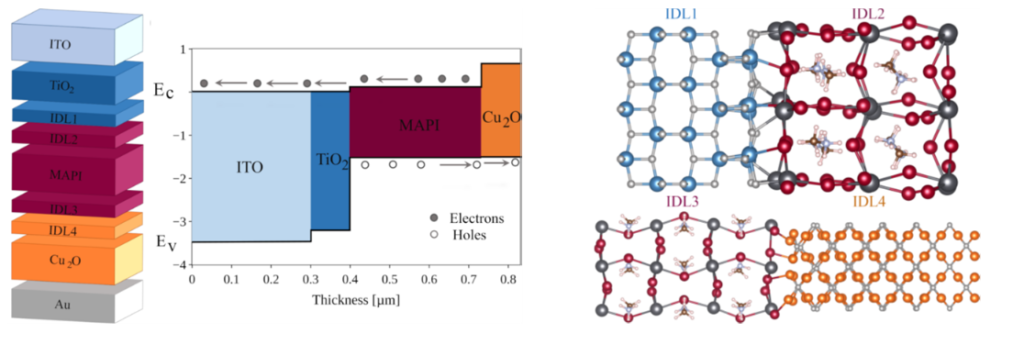
13) Electron transporting bilayers for perovskite solar cells: spray coating deposition of c-TiO2/m-SnO2-quantum dots
Authors: Anca G. Mirea, Ioana D. Vlaicu, Sarah Derbali, Florentina Neatu, Andrei G. Tomulescu, Cristina Besleaga, Monica Enculescu, Andrei C. Kuncser, Alexandra C. Iacoban, Nicolae Filipoiu, Marina Cuzminschi, George A. Nemnes, Andrei Manolescu, Mihaela Florea, Ioana Pintilie
Preprint available at http://perla-pv.ro/repository/ and http://arxiv.org/abs/2406.18261
Abstract: Herein we present a comparative study among different mesoporous electron transporter layers (ETLs), namely nanometric m-TiO2, m-SnO2 and m-SnO2 quantum dots (QDs), deposited by spray coating method. The experimental data correlated with the hotovoltaic parameters indicate that the SnO2 mesoporous layer obtained from the spray deposition of the in-house prepared QDs solution is the best candidate between the three used mesoporous ETLs. The use of the in-house prepared SnO2 QDs solution presents smaller agglomerates composed of 3 nm NPs resulting in the formation of a thinner, more uniform, and compact mesoporous ETL, compared with the other two ETL solutions. The formamidinium-methylamonium-potassium (FAMA@10K) perovskite deposited on this m-SnO2 QDs ETL presents a lower RMS, more uniformity and, a higher amount of PbI2. Interestingly, this higher concentration for PbI2 seems to enhance the performance of the perovskite solar cells (PSC), compared to the other two mesoporous ETLs. Our work reveals that SnO2 QDs solution can be easily produced in the laboratory and it is more suited for the deposition of the mesoporous ETL when choosing a FAMA@10K configuration perovskite solar cell with power conversion efficiency (PCE) higher than 10%.
Published: 20 January 2025 in Colloids and Surfaces A: Physicochemical and Engineering Aspects 2025, 705, 135508.
DOI: https://doi.org/10.1016/j.colsurfa.2024.135508





